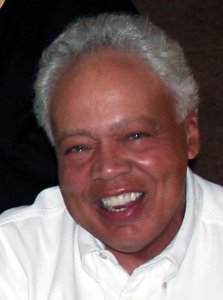I was hooked on becoming an ink-stained wretch after seeing my first byline when I was in 4th Grade and covered a basketball tournament for our elementary school newspaper in Detroit. Those bylines continued on newspapers in high school, at Wayne State University and at the two dailies in the Motor City. I left daily journalism for nearly six years to work as a correspondent for Time magazine, but returned as a writer and editor at the Los Angeles Times where I was on teams that won three Pulitzer Prizes during a 20-year career. I spent nearly seven years as night city editor or as an assistant metro editor.
I tried to retire twice but failed. I “unretired” briefly to work as city editor at the Los Angeles Daily Journal, a legal newspaper, and I later spent a year doing media relations for the American Civil Liberties Union of Southern California. I have also edited three books. Two have been published —Picturing Black New Orleans: A Creole Photographer’s View of the Early Twentieth Century, by retired Occidental College Professor Arthe Anthony, and The Butterfly & the Bulldozer, a memoir by the late Rick Richards. Another memoir, untitled, has been finished for at least two years, but the subject may feel that she revealed too much and has yet to agree to submitting it to agents or publishers.

I was pleased some years ago when younger relatives and friends would ask to see articles I had written before some of them were born. Internet searches often only turn up my most pedestrian pieces from daily journalism. But there has always been more. I collected more than 1,100 bylines in the years I wrote rather than edited at the Times. As I continue to embrace sunrises, ride the thermals and collect sunsets, I decided to compile a few pieces I find interesting and entertaining and began posting them as my “Nostalgia Tour” on Facebook.
The Tour developed a following, even among some former Times colleagues who already had seen some of the work, and the idea for a website was born. These pieces are an archive of sorts, a historical record of people and places that may no longer exist. The earliest one captures the scene at Detroit’s Palmer Park Golf Course in 1975, hands down the story I had the most fun reporting and writing in my career. I wrote that piece for the Detroit Free Press Sunday Magazine when I worked as a Time magazine correspondent in the Detroit Bureau. There are also profiles and sketches, reviews and features, and selections from a multi-year series on the case of Elmer “Geronimo” Pratt, an abominable injustice. I began writing about Geronimo Pratt when no other publication in the country was covering the case. By the time the hearing that ultimately freed Pratt from prison was underway, the national and international press corps had come onboard.
I call my site “Riffs on the City” because all of these pieces arose from my experiences in urban America and cities abroad. These posts share a common element: They are nearly all about African American individuals, issues, culture, characters. A scan of my bylines, however, uncovers that my reporting included politics, trials, elections, tragedies — hell, even a major takeout on Arabian Horses and the madness driving that market nearly 40 years ago.
But these posts, for the most part, are stories that may not have been done had I or another African American reporter not done them. Reporters who are not black certainly write compelling copy about African Americans. But so many posts on this site are stories discovered by being involved in the black community on a daily basis. A newsroom wag at the Times once remarked that news is what happens to or near an editor. The same can be said of reporters.
Most of these posts come from the Los Angeles Times, including columns I wrote for two years in a special section called the Crenshaw edition. Other pieces come from ACCENT/L.A., an occasional news and entertainment newspaper I published while simultaneously working for the Times, Los Angeles Magazine and the website Capital & Main. I will be adding pieces from time to time – some from years earlier and some discussing contemporary issues — in a category called Wild Cards. So come in and explore.
A word about dates. Except for the category Wild Cards, the dates at the top of a post are not necessarily the true posting date or the actual date the piece was originally published. The original publication date has been moved to the top of some pages, but it has been included wherever possible on the byline.
—Ed Boyer